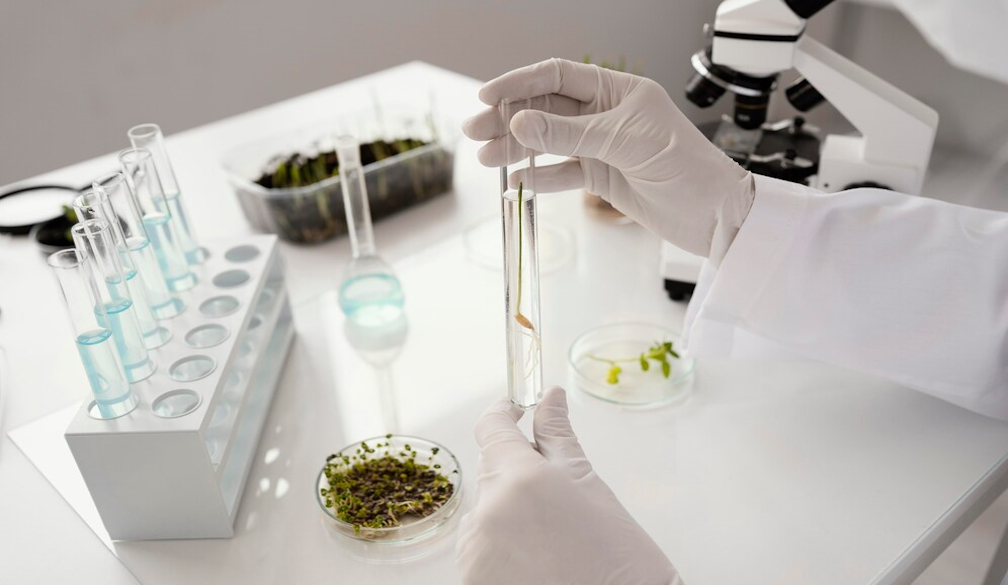Thymalin Peptide: Potential Mechanisms and Properties

Thymalin, a thymic peptide complex, has garnered interest in various biological contexts. Its molecular composition and potential functions within the immune system and cellular mechanisms present a fertile ground for research. This article explores the hypothesized properties and potential implications of Thymalin, focusing on its possible influence on immune modulation, cellular regeneration, and anti-aging implications on a cellular level. By delving into the molecular interactions and theoretical mechanisms of action, we aim to provide a comprehensive overview of the peptide's potential.
Thymalin Peptide: Introduction
Thymalin, derived from the thymus gland, is a complex of polypeptides that has been the subject of various investigative efforts. The thymus gland plays an apparently crucial role in developing and regulating the immune system, particularly in the maturation of T-cells. Thymalin's molecular composition is theorized to mirror this regulatory capacity, making it a molecule of interest for its immunomodulatory, regenerative, and anti-aging potential.
Thymalin Peptide: Molecular Composition and Structure
Thymalin comprises a mixture of low-molecular-weight peptides, primarily consisting of amino acids essential for cellular communication and regulation. The precise structure of Thymalin is complex, encompassing several peptide fragments that may collectively contribute to its biological activity. These fragments include sequences theorized to interact with cellular receptors and intracellular signaling pathways, suggesting a multifaceted mechanism of action.
Thymalin Peptide: Hypothesized Immunomodulatory Properties
One of the primary areas of interest in Thymalin research is its potential in modulating immune responses. It has been hypothesized that Thymalin might support T-lymphocyte activity and proliferation, thereby supporting the immune system's ability to respond to pathogens. The peptide's origin supports this hypothesis in the thymus gland, an apparently critical organ in immune function. Investigations purport that Thymalin may influence the differentiation of T-cells and support their responsiveness to antigens, thus potentially augmenting adaptive immune response.
Studies suggest that Thymalin might exhibit regulatory impacts on cytokine production, pivotal in orchestrating immune responses. Thymalin might theoretically balance pro-inflammatory and anti-inflammatory signals by modulating cytokine profiles, contributing to immune homeostasis. Such a balancing act might be influential in conditions characterized by immune dysregulation.
Thymalin Peptide: Cellular Processes
Another intriguing area of research concerns Thymalin's involvement in cellular regeneration processes. It has been proposed that the peptide may stimulate the proliferation of progenitor cells and support tissue repair mechanisms. This regenerative property might be particularly relevant in tissue damage and cell aging, where cells' regenerative capacity declines.
Research indicates that Thymalin might promote the synthesis of nucleic acids and proteins within cells, thus enhancing their ability to repair and replicate. Research indicates that the peptide might also be involved in modulating the activity of growth factors and other signaling molecules that play apparently critical roles in cellular regeneration. By influencing these pathways, Thymalin may contribute to maintaining tissue integrity and function over time.
Thymalin Peptide: Cell Aging
Cell aging and death (known scientifically as apoptosis) is associated with a gradual decline in immune function, known as immunosenescence, and a reduction in tissue regenerative capacity. Thymalin's potential anti-aging properties are linked to its hypothesized impacts on both these fronts. Thymalin might theoretically counteract some aging-related physiological changes by modulating immune responses and promoting cellular regeneration.
Investigations suggest that Thymalin may affect the expression of genes involved in cell aging processes, potentially altering the rate of cellular senescence. The peptide's influence on oxidative stress pathways is also interesting, as oxidative stress is a major contributor to cell aging.
Thymalin Peptide: Mechanistic Pathways
The exact mechanistic pathways through which Thymalin may exert its impacts remain to be fully elucidated. However, many potential pathways have been proposed based on current research. Investigations purport that Thymalin might interact with specific receptors on the surface of immune cells, kickstarting intracellular signaling cascades that manage gene expression and protein synthesis.
One hypothesized pathway involves the peptide's interaction with toll-like receptors (TLRs), which may play a key role in the innate immune response. By binding to TLRs, Thymalin might influence the activation of transcription factors like NF-κB, which regulate the expression of cytokines and other immune-related genes.
Another potential pathway is the modulation of the Akt/mTOR signaling pathway, which is implicated in cell growth, proliferation, and survival. Findings imply that Thymalin for sale might support the activity of this pathway, thereby supporting cellular regeneration and preventing apoptosis. This interaction might be particularly relevant in tissues with high turnover rates, including skin and gastrointestinal tract.
Thymalin Peptide: Future Directions
Scientists speculate that Thymalin's potential implications may extend beyond its hypothesized roles in immune modulation, regeneration, and anti-aging. Researchers are exploring its influence in various experimental contexts, including chronic inflammatory conditions, autoimmune diseases, and age-related degenerative disorders. While the data is primarily speculative, the peptide's multifaceted properties suggest various possible actions.
Further research is needed to fully understand Thymalin's mechanisms of action and validate its potential. Investigations using advanced molecular techniques and experimental studies will be essential to determine the peptide's potential in different contexts. Developing synthetic analogs and optimized formulations might also support Thymalin's research potential, making it a valuable tool in contemporary studies.
References
[i] Khavinson VK, Linkova NS, Kvetnoy IM, Polyakova VO, Drobintseva AO, Kvetnaia TV, Ivko OM. Thymalin: Activation of Differentiation of Human Hematopoietic Stem Cells. Bull Exp Biol Med. 2020 Nov;170(1):118-122. doi: 10.1007/s10517-020-05016-z. Epub 2020 Nov 25. PMID: 33237528; PMCID: PMC7686446.
[ii] Babenko TF, Antonenko VT, SkuratovskiUi MF. Timalin v kompleksnom lechenii bol'nykh khronicheskim limfoleĭkozom [Thymalin in the combined treatment of patients with chronic lympholeukemia]. Vrach Delo. 1989 Mar;(3):47-9. Russian. PMID: 2750120.
[iii] Khlystova ZS, Kalinina II, Shmeleva SP, Ryabchikov OP, Khavinson VKh. Age-related changes of thymalin content in human epidermis. Bull Exp Biol Med. 2002 Jun;133(6):620-2. doi: 10.1023/a:1020214816056. PMID: 12447484.
[iv] Khavinson VKh. Peptides and Ageing. Neuro Endocrinol Lett. 2002;23 Suppl 3:11-144. PMID: 12374906.
[v] Lin'kova NS, Poliakova VO, Kvetnoĭ IM, Trofimov AV, Sevost'ianova NN. [Characteristics of the pineal gland and thymus relationship in aging]. Adv Gerontol. 2011;24(1):38-42. Russian. PMID: 21809618.














